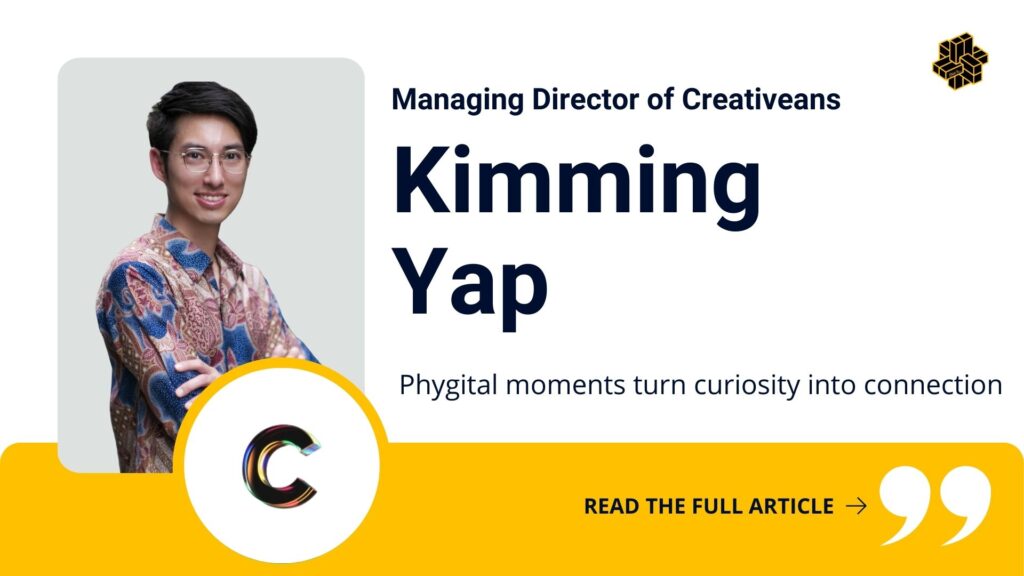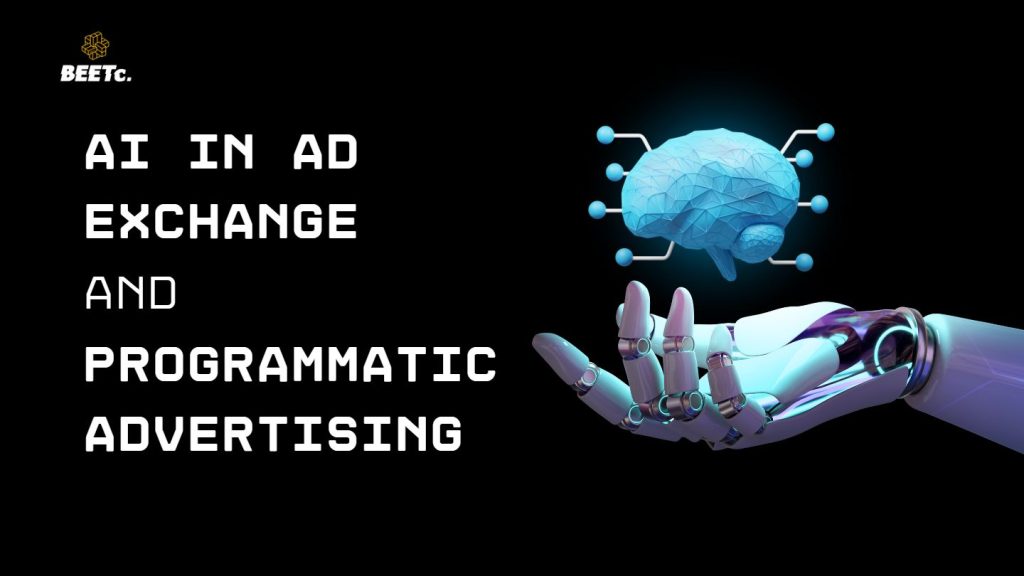
Relevance
AI is a boom that never before. Generative AI tools like ChatGPT and DALL-E are captivating the public’s attention, with ChatGPT alone garnering 10 million daily users in 40 days. Instagram took 355 days to get to 10 million registered users.
AI has many business applications, from automating manual tasks and real-time data monitoring to achieving more precise customer targeting. All-in-all, AI helps you save time and money.
With programmatic advertising advancing at an ever-increasing pace, automation is becoming essential to keeping up with the trends.
According to a report by Grand View Research, the global AI advertising market will reach $107.5 billion by 2027.
So let’s focus on the AI benefits of programmatic advertising and ad exchange.
Better Targeting and Personalisation
The primary benefit is targeting.
Artificial Intelligence analyses previously collected consumer data to create demographic profiles and track purchasing preferences, helping marketers determine their campaign’s target audience.
For example, both Netflix and Spotify use AI to curate custom mixtapes and watchlists for their users based on their previous consumption patterns. If done right, AI can accurately determine the timing, placement, and content of ads to precisely target a certain individual, ensuring a highly personalised experience.
Each audience should have an ad personalised based on its data. And to continue that experience, each ad should direct users to a post-click page that is equally personalised for boosting conversions.
Cost-Effective Advertising
AI assists advertisers in optimising ad spend by analyst
ing data and identifying the most effective ads and targeting strategies. It means that advertisers increase their return on investment (ROI) and receive excellent value for their money.
For instance, advertisers might have particular goals, like selling a $20 game install to a 19-year-old player. They might not think about a 65-year-old man. But AI techniques may reveal that this man will likely spend about $4 over four days. And if the cost of acquisition is 80 cents, it yields as good an ROI as higher-dollar goals for more typical ad targets.
Artificial Intelligence is excellent for uncovering revenue opportunities that budget and human assumptions may limit.
Improved Ad Creatives
Smart algorithms adapt creative resolutions so your ad unit easily fits popular ad placements.
This feature can be especially beneficial for advertisers who need more traffic due to the fact that their advertising creatives are non-standard and don’t fit most of the available ad placements.
The creative with optimised resolutions will fit more ad slots, thus promoting more ad impressions for the advertiser.
Moreover, AI can provide insights about what creatives with more colour contrast perform better at night, or ads that feature sports stars do best on the weekend.
With AI, brands can gain a better understanding of how everything from messaging, fonts, colours, imagery, button sizes, or formats impact overall campaign performance.
Below you can see the best examples of AI art generators:
Bing Image Creator
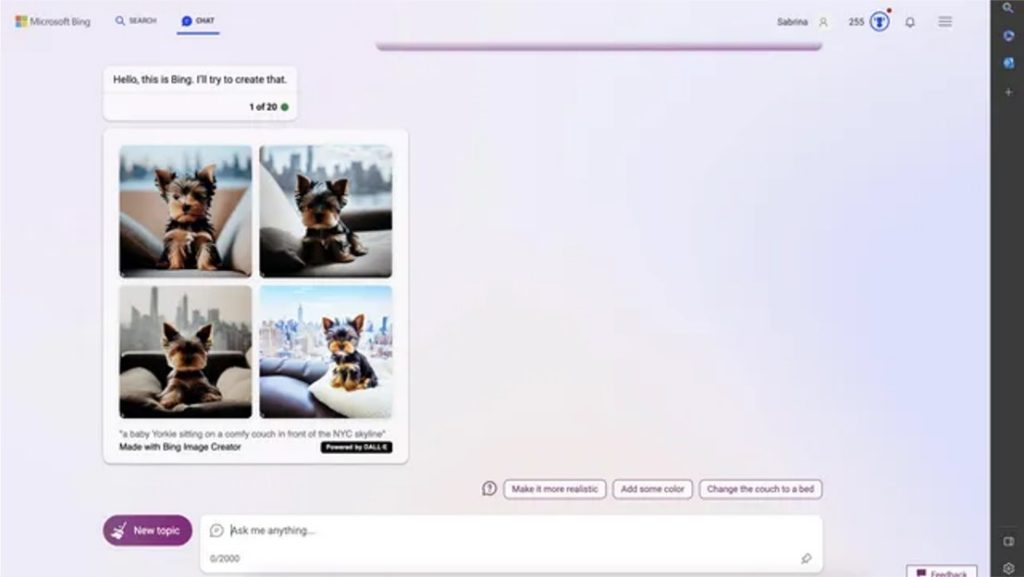
DALL-E 2 by OpenAI
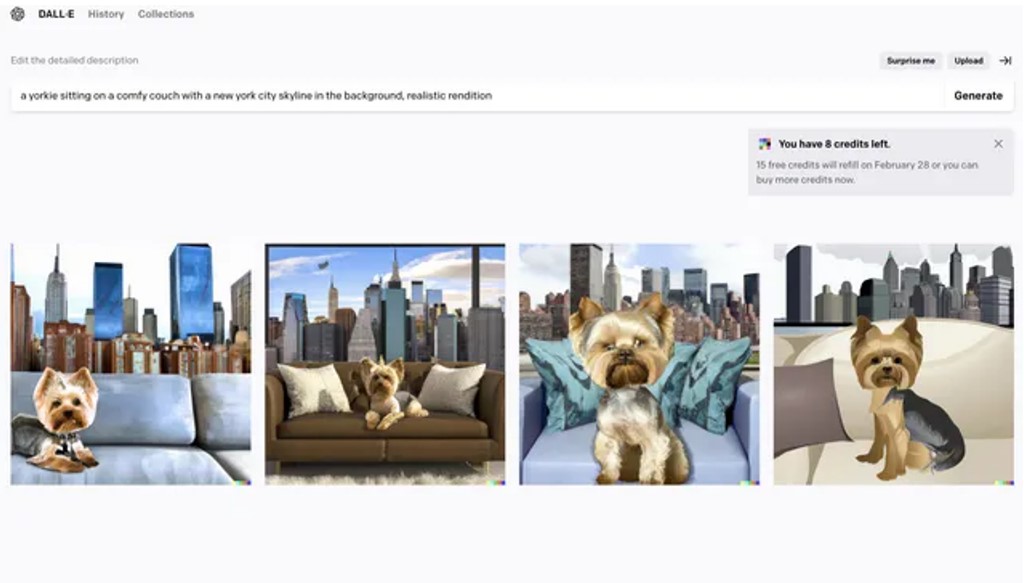
Moreover, remember about AI copywriting tools to improve your ad campaigns.
ChatGPT
ChatGPT is one of the best examples, particularly for content marketers. It helps to scale up the production of articles, reports, or other ongoing publishing needs.
For instance, we asked ChatGPT to give us some blog topic ideas:
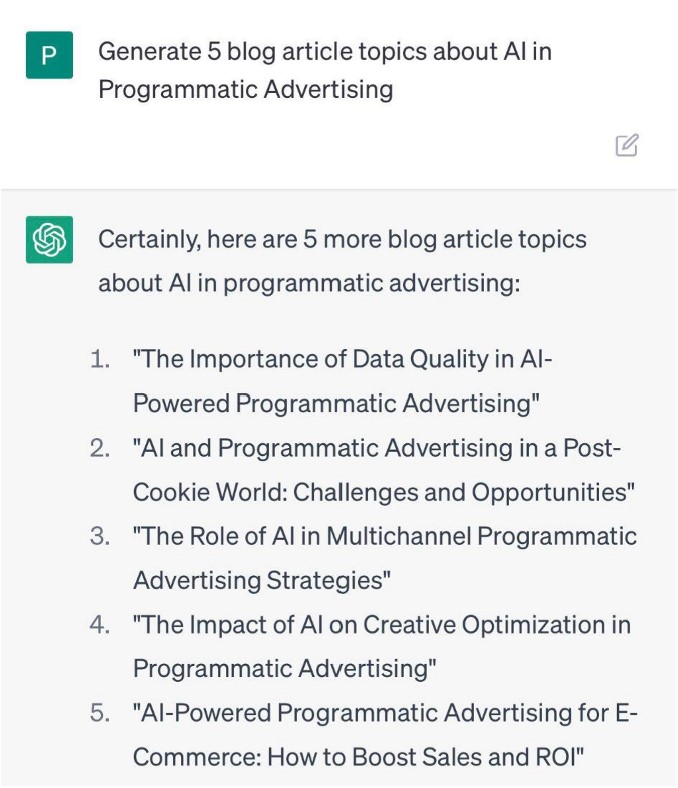
Fraud Prevention
As fraudsters employ new techniques that can imitate human behaviour, AI algorithms can assist marketers in identifying fraudulent behaviour that is not immediately apparent to the human eye. It is crucial in the case of app installs, where detecting fraudulent clicks and impressions before installation becomes vital.
The “tree-based model” is a fundamental AI technique that analyses many signals to achieve maximum coverage and accuracy in detecting outlier behaviour. Here is an example of this model below:
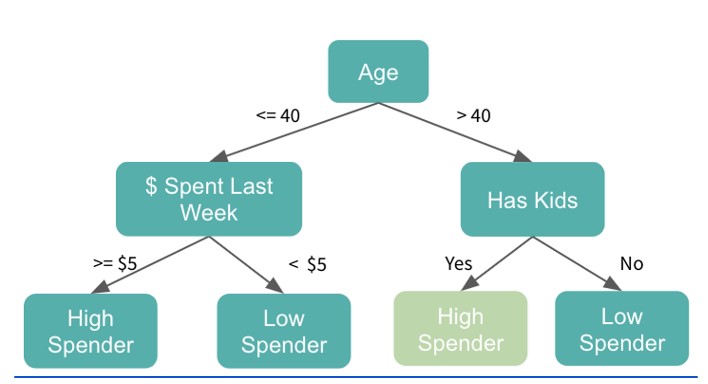
The second scenario is “the chameleon,” in which fraudsters imitate legitimate publishers and generate installs at a later date when user retention is predicted to decrease.
The third scenario is an “inventory burst,” in which a suspicious publisher’s inventory count spikes when in-app registration is typically declining.
AI techniques can identify these sophisticated ad patterns and feed them back into the filters to enhance future detection.
By detecting ad fraud cases, marketers can eliminate low-quality traffic and more accurately calculate their returns on advertising spend (ROAS).
For instance, Appier examined data from over 5 billion campaign data points through its network, including ad clicks and app installs.
As a result, the AI-based fraud detection model identified twice as many fraudulent transactions as the traditional rule-based model.
The AI-based model also proved more cost-efficient for advertisers, generating a 4% higher return on advertising spend (ROAS) than the traditional model.
The future AI in programmatic advertising and ad exchange
AI influences a lot of different aspects of programmatic advertising, and the famous ChatGPT could be the next step forward in terms of opportunities.
Firstly, with technologies like ChatGPT, generating numerous alternative slogans for creative ads has become a reality.
SmartHub team tried the power of ChatGPT in creating slogans for a white-label ad exchange. Here are what we have gotten:
Secondly, ChatGPT creates content for commercials and ad creatives.
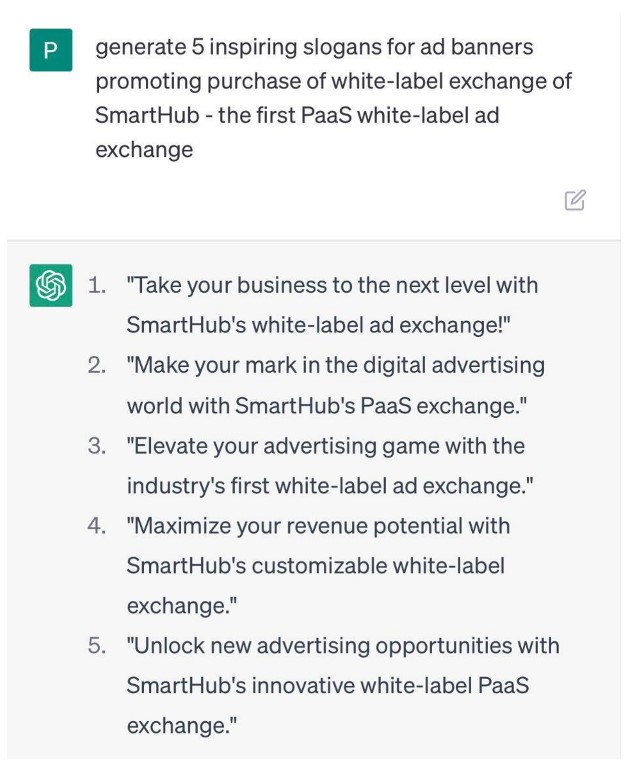
The Mint Mobile ad created by Ryan Reynolds using ChatGPT is an excellent example of an advertisement created solely using ChatGPT’s capabilities.
Moreover, it can be integrated into ad exchanges and DSPs to provide users with recommendations and responses to their requests.
ChatGPT could be also embedded in programmatic platforms, contributing to the automated creation of campaigns, creatives, and slogans.
To sum up, it will benefit digital marketers and brands looking to improve their campaigns, interact with their target audiences, and achieve better advertising results.
Conclusions
The usage of artificial intelligence in programmatic advertising has huge advantages ranging from time savings to ad optimisation to hitting campaign goals and increasing revenue.
ChatGPT has the potential to significantly support and reinforce advertising operations in ad exchanges and DSPs. A wise advertiser would always be aware of the most recent technological developments and the best ways to use them.
Even nowadays, we can see that modern industries like advertising technologies are complicated to imagine without the skills to use the most recent technological developments like AI. What level of widespread development will the AI tools achieve? We can guess only.
Author Bio
Thanks Roman Vrublivskyi for contributing his insights on ad exchange and programmatic advertising and AI tools applications!
Roman is the CEO of SmartHub‘s white-label programmatic solution. Starting his career in 2016, Roman was focused on business development in Informational Technologies and SaaS industries. In 2019 he shifted his focus to enterprise-driven advertising technologies within SmartHub.
Find out more insights at our MarTech Content Library




